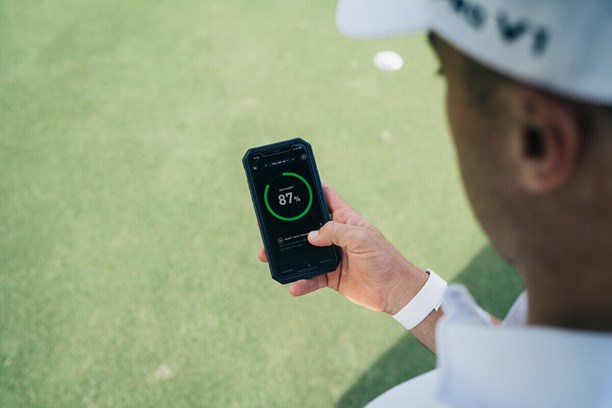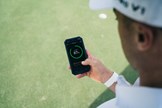Whoop Review
Published:
-
At a glance
- TG Rating
- Owner Rating
What we say...
The Whoop strap 3.0 is currently being worn by hundreds of players on the PGA and LPGA Tour, including Rory McIlroy and the Korda sisters, and they are not even paid to use it.
What we say:
It won’t win any fashion awards but the Whoop strap 3.0 has built a big reputation off the back of being able to detect Covid-19 symptoms. Just last year, Nick Watney’s respiratory rate alerted him to his symptoms early and the PGA Tour (and later the LPGA Tour) ended up partnering with Whoop to supply straps to over 1,000 players, caddies, and staff.
RELATED: Best golf GPS watch?
Players like Justin Thomas and Nelly Korda have even started sharing their heart-rata data with broadcasters to use during live TV coverage so we can see how much a wedge shot over water really affects them.
It’s served as a pretty good promotional tool for the brand (that’s why we decided to get one) but what makes Whoop so different from every other fitness trackers is that it does not tell the time, nor does it have a screen.
Instead, you have to pair the waterproof strap with the free Whoop app on your smartphone which lets you access ridiculously detailed information about how hard your body is working, the quality of your sleep and how recovered you are.
Rather than counting steps, Whoop tracks your quality of sleep and the strain caused by daily activities, such as workouts, calories burned and even stress and anxiety. A small sensor is used to measure your heart rate over 100 times per second which then creates recommendations and insights based on your data.
RELATED: Best premium golf balls
To get started, you simply inform the Whoop Sleep Coach whether you want to ‘peak’, ‘perform’ or ‘get by’ and it will tell you when you’ll need to go to bed. Once asleep, the Whoop will auto-detect the time spent in each sleep stage (light, REM, deep and awake) and give you a recovery score, expressed as a percentage, as soon as you wake up.
It will then suggest how much strain you should take on for that day, based on how well rested your body is. Clever or what?
By filling in the Whoop journal, you can track over 40 different behaviours and see how things like dietary and life choices affect your recovery levels day-to-day. (Spoiler alert: alcohol is really not good for your body).
You even get weekly and monthly reports showing how certain actions (even sex) have affected your body, which might go some way to explaining recent performances on the golf course.

Will it actually improve your golf game?
It will teach you how hard to train and how to recover better, which might help to shave a few strokes of your score. After four months of use, Whoop claims its average member reduces their resting heart rate by 4.4 beats per minute, experiences 60 percent fewer injuries, and consumes alcohol 79 percent less often before bed.
RELATED: How to lower your scores in five easy steps, according to ShotScope
We’ve certainly felt the benefits in training smarter and since the Whoop recharges with a small battery pack which slides over the waterproof strap, you never need to take it off and miss recording sleep. No other fitness tracker offers the same level of convenience.
“Whoop helps to monitor my recovery and sleep levels daily, which ultimately determines how hard I can train,” says Rory McIlroy. “This is especially important when I’m on the road. My game has benefited as a result.”

It sounds pretty incredible…
Except it doesn’t quite live up to the billing. What lets it down (apart from the looks) is the heart rate data, which can be easily skewed by excessive hand movements. On more than one occasion we’ve been cooking and the strap has a recorded a 30-minute elliptical workout with an average heart rate to match.
What’s more, once a workout is registered you can’t delete it, which can skew your strain and recovery. Using a bicep strap, which costs an extra £30, does produce more accurate, if not error free, readouts, though it does have a habit of pinging off when undressing and leaving an indentation on your arm.
Would you recommend the Whoop 3.0?
We can certainly understand why 90 percent of players on the PGA Tour are using it, not least because it feels like you’ve got a silent life coach on your wrist. But while the insights supersede every other fitness tracker we’ve ever tested, the fact there is so much to look at and click through means you can easily get lost in all the data.
RELATED: How non members can get an official golf handicap
There are no benchmarks to give a sense of accomplishment either and the heart rate inaccuracies can occasionally make you lose faith in what you are being recommended. We can still see the benefits for serious athletes or a data-driven person wanting to learn more about their body, but your money may be better spent elsewhere if you’re a casual golfer or someone who easily obsesses or worries about their health.
How do you get it?
While the band is technically free, monthly subscriptions start at $30 and the initial commitment is for six months. Committing to a longer term can reduce the cost even further but if you don’t have an active membership, the app doesn’t collect data. Find out more about the range and buy yours here.
The author: Michael Catling is Today’s Golfer‘s Features Editor. Michael has been a journalist for 11 years, is an eight-handicap golfer and a health and fitness fanatic.
READ NEXT: Is this gadget the secret to Collin Morikawa’s success?
Product Information
Whoop Strap 3.0
Strap price: The WHOOP Strap 3.0 is free when you join the subscription service.
Membership price: Six months – £30 (£150); 12 months – £24 per month (£244); 18 months – £18 (£324). Membership includes access to the WHOOP app which gives personalised recovery, strain, and sleep insights in addition to built-in coaching features and reports.
Colours: The strap is available in a huge variety of colours and styles that are always being added to. Head to the Whoop website to see the latest options.
Website: whoop.com



